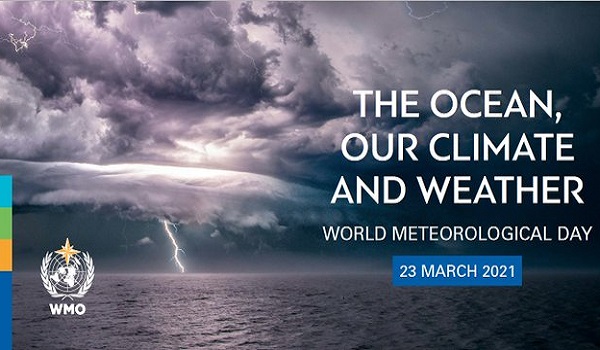 Credit: WMO
Credit: WMO
Luxembourg is once again taking part in World Meteorological Day, an event held annually on 23 March in commemoration of the establishment of the World Meteorological Organisation (WMO).
The theme of World Meteorological Day 2021 is “the ocean, our climate and weather”. The ocean, which covers around 70% of the Earth's surface, exerts a significant influence on weather and climate, even in landlocked countries like Luxembourg. This year's theme highlights the efforts of the WMO in highlighting the links between the ocean, weather, temperature, atmospheric pressure, wind and precipitation.
On this occasion, Luxembourg's Minister of Agriculture, Viticulture and Rural Development, Romain Schneider, pointed out that “among the economic sectors, agriculture, viticulture and horticulture are those which depend the most heavily on meteorological and climatic hazards. This highlights the vital importance of meteorological analyses and warning systems that we make available to the sector!”
In Luxembourg, the first national meteorological service was created in 1907 under the tutelage of the current Administration of Technical Agricultural Services (Administration des services techniques de l'agriculture - ASTA) of the Ministry of Agriculture, Viticulture and Rural Development. The objective of the meteorological service is to provide weather data, analysis and forecasting to the agricultural sector and to assess the impact of weather conditions on agricultural production.
Today, the meteorological service is the only one in the Grand Duchy to operate a network of 32 automatic stations, distributed in a representative manner throughout the country. These stations measure the temperature and humidity of the air as well as the level of precipitation. A dozen stations also measure wind speed and direction, sunshine duration and ground temperatures. All these data are recorded at ten minute intervals and published on the site www.agrimeteo.lu.
The services offered to farmers, winegrowers, horticulturalists and arborists also include forecast modelling and planning and decision support. The long series of measurements from certain stations (that of LuxembourgCity dates back to 1838), for example, to reconstruct the climate over time and to understand climate change in Luxembourg. These data are used in particular in the fields of research and by technical offices.
Popular alert services such as Sentinelle and Vitimeteo, for example, indicate if and when the control of certain pests and parasites is appropriate for various crops. Many farmers make use of the Sentinelle early warning service on diseases, which are detected in the cereal trial fields in cooperation with the Luxembourg Institute of Science and Technology (LIST) and the Lycée Technique Agricole (LTA) in Ettelbruck. Meanwhile, beekeepers use the Varroawetter service to protect their bee colonies from early stage pests. Current weather alerts notify subscribers via text message or email when the temperature threatens to drop below a certain threshold. This is considered a valuable tool for arborists and wine growers.
Regarding iternational climate research, Luxembourg has been represented since 1953 at the WMO, which deals in particular with the global standardisation of meteorological measurements and data exchange. This representation is ensured by the head of the meteorological service of ASTA, who also maintains bilateral relations with the meteorological services of neighbouring countries.
In addition, every three months, the ASTA meteorological bulletin analyses the weather for the past season and its consequences for agricultural and viticultural crops.








